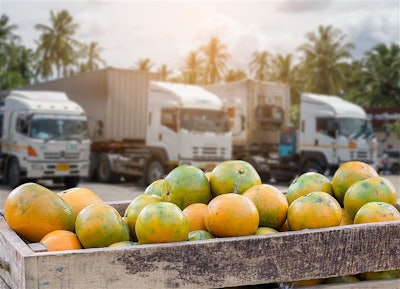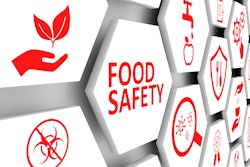
Canada imports billions of dollars in food and beverage products from around the world to supplement domestic production, including fruits, vegetables, coffee, tea, wine, spirits, seafood, dairy, chocolate, confectionery and more. In 2022, Canada’s farm, fishing and intermediate food imports were valued at $28 billion and the country’s principle trading partner was the United States at $15.3 billion, followed by Mexico ($2.7 billion), China ($591.8 million), Italy ($248.6 million), Netherlands ($229.9 million), France ($153.7 million), Germany ($72 million), UK ($51.8 million), Japan ($37.7 million) and South Korea ($26.4 million).
Like other countries, Canada imposes tariffs and duties on food and beverage imports as part of its customs and trade regulations. These vary depending on the type of product, its classification under the Harmonized System (HS) code, and any trade agreements in place between the trading countries. For example, while the United States-Mexico-Canada Agreement (USMCA) eliminated many tariffs on food and agricultural products traded between Canada and the United States (e.g., grains, dairy, poultry), tariffs and duties still apply to other items (e.g., processed foods, alcoholic beverage).
As 2023 draws to a close, Canadian importers and their partners are preparing for a massive, generational shift in the way the government collects, manages, and reports on import revenue and trade information—not just for food and beverage imports but for all commercial goods entering Canada.
What is CARM?
Canada Border Services Agency’s (CBSA) Assessment and Revenue Management project, better known as CARM, is a multi-year digital initiative that will modernize how the government interacts with the trade community—importers, customs brokers, freight forwarders, carriers, customs bonded and sufferance warehouse operators, duty-free shop operators, financial security providers and software service providers—to assess and collect over $30 billion in annual revenue.
Architected to replace legacy systems that date back to 1987, CARM is designed to deliver a globally leading customs experience that reduces the burden for legitimate trade, makes CBSA more efficient, and generates more revenue while helping to secure Canada’s borders. It’s a transformational change for both industry and the government, and it’s coming into force on May 13, 2024, as the official system of record.
Where are we today?
CARM is structured as a series of releases. Release 0 involved the Accounts Receivable Ledger (ARL) in January 2021. CARM Release 1 was launched in May 2021, introducing the self-service CARM Client Portal (CCP), allowing importers (including food and beverage importers), brokers and third parties who submit rulings on behalf of importers to view transactions and statements of account, request rulings, and pay invoices with new electronic payment options.
In October, CBSA kicked off the last phase of the mandatory transition to CARM. CARM Release 2 is now live in a pre-production environment for select industry partners and software service providers to test their own internal systems and processes. Release 2 builds upon lessons learned in the Deep Cycle Testing (DCT) and CARM Experience Simulation (CES) pilot, which brought together volunteers from the trade community this past year to perform a series of simulations in sprints, against which CBSA also gauged its own readiness.
Where are we going?
Between now and the end of 2023, CBSA will continue to certify companies who have a direct connection with CARM and collectively represent a significant portion of CBSA’s marketplace. Once certified, any organization can continue to use the system and perform simulation activities. Importers, brokers and other trade partners who haven’t already registered on the CCP must do so to review the new system prior to May 2024 to minimize potential supply chain disruptions. Additionally, importers who use a broker to clear and account for their shipments into Canada will need to designate authority to their broker so they can continue to perform these activities. During this time, companies will be able to interact with and conduct simulations in CARM as a parallel system to the legacy system. For example, an importer or their customs broker could send the same accounting entry to both systems (CARM and legacy) and compare results. In this way, early participants gain valuable insight into what’s changing and into the nuances of CARM.
For added complexity, in order for CARM to be fully implemented, CBSA is also proposing a number of amendments to existing regulations: 9 under the Customs Act and 3 under the Customs Tariff. The proposed amendments remain on schedule and are expected to come into force in May 2024 with the cutover to CARM. In terms of the big bang launch itself, the May 2024 system will introduce the following features:
· Electronic commercial accounting declarations that can be corrected and adjusted
· Changes to the Release Prior to Payment (RPP) program
· Harmonized billing cycles
· New offsetting options
· Electronic management of appeals and compliance actions
· The ability to:
o Register for a Business Number (BN9)
o Enroll in various CBSA commercial programs
How ready are we?
CBSA continues to track its own operational readiness, industry readiness and solution readiness. In terms of importers and trusted partners filing on behalf of importers, approximately 40,000 companies are currently registered with CCP accounts and this figure needs to grow. For the digital filing community, certification numbers also need to grow, as this is another key element of overall readiness. To drive greater preparedness, CBSA has ramped up CARM Trade Chain Partner Working Groups and training to continue to help educate importers, brokers and vendors on how to adapt their systems and business processes to integrate with CARM successfully.
Parting thoughts
For hundreds of thousands of importers and their partners, preparedness now is crucial to keep goods flowing compliantly in the very near future. Without question, CARM is a monumental project and, as is the norm with major government projects, there are many checks and balances in the journey. Ultimately, CARM itself will continue to evolve. Government of Canada requirements will change and the need for CARM to be able to respond in lock step to the reality of a changing regulatory environment is already happening.
While all parties have work to do to ensure readiness for May 13, 2024, all parties also have a vested interest in a more modern and streamlined system for importing commercial goods into Canada, including food and beverage imports.



















